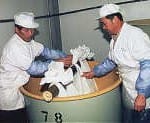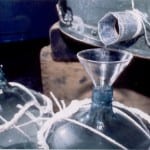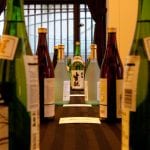The Last of the Heisei Era
 The last Zenkoku Shinshu Kampyoukai (Officially, the Japan Sake Awards, but more descriptively, the National New Sake Competition) of the Heisei Era was held last month, and the results were recently announced.
The last Zenkoku Shinshu Kampyoukai (Officially, the Japan Sake Awards, but more descriptively, the National New Sake Competition) of the Heisei Era was held last month, and the results were recently announced.
Lamentably, the awareness of this historically, culturally and technically significant event on the part of the consuming public, the average Taro on the street, is dismally low. Like, next to nothing. That really is a shame as it is such a cool, important event within the industry.
I have written about this contest each year for perhaps 20 years, often at length with peripheral topics like rule changes, politics, and the actual mechanics of the tasting. All of those can be found in the newsletter archives, which are necessarily split up across several locations, the list of which has been collated and presented at the end of this newsletter. If you are interested in more detail on the event, by all means please check that out here.
This year was the 107th running of the contest, which has run each year but two over the last 109 years. Each brewery is permitted only one submission per brewing license. (So those breweries with more than one brewing facility can submit one per brewery.) Of approximately 1200 active sake breweries in the country, 857 submitted a sake.
Almost always it is a daiginjo, although junmai daiginjo are becoming more common. Almost always it has been brewed especially for this contest, i.e. not a sake on the market. And almost always it is fairly intense in flavors, aromas, with exquisite balance. Think “daiginjo on steroids.”
Of those 857 entries, 416 received an award, and of those 237 were gold medals (the remaining 179 being the equivalent of silver, although different nomenclature is used).
There were several notable accomplishments this year. Takashimizu (they have several facilities, but their Goshono Brewery is the one of which I write here) of Akita and Koganezawa of Miyagi  upped there industry-leading record to 16 consecutive gold medals in a row. Considering that there are breweries that have never won a single gold medal at all over their entire history, and that winning consecutively is a fairly big accomplishment, that many in a row is quite amazing. Furthermore, the brewery making Urakasumi sake in Miyagi extended their industry leading total to 38, although not consecutively of course.
upped there industry-leading record to 16 consecutive gold medals in a row. Considering that there are breweries that have never won a single gold medal at all over their entire history, and that winning consecutively is a fairly big accomplishment, that many in a row is quite amazing. Furthermore, the brewery making Urakasumi sake in Miyagi extended their industry leading total to 38, although not consecutively of course.
And, of even further significance, Fukushima Prefecture won more gold medals than any other prefecture for an unprecedented seventh year in a row! In truth, this needs to be conveyed together with the fact that there a lot of producers in Fukushima, third in number behind Niigata and Nagano. So that helps.
For example, Akita prefecture has about half the number of kura that Fukushima has, and scored enough golds to have the highest ratio of golds to submissions. That, too, is really significant; perhaps even more so. I’m just sayin’.
But still, they have this contest dialed in up there in Fukushima, and the quality of their contest sake drips down (no pun intended!) to raise the overall level of their sake on the market.
Fukushima sake has the utmost respect of the industry overall, and let’s hope this spreads even more to the sake-loving contingent all across Japan.
Congratulations to all award winners! The organization behind the competition, the National Research Institute of Brewing, publishes the results in both Japanese and, in recent years, English. You can see the results here, in Japanese. And a scant few days ago the NRIB also published the results from there English-language website and those results are here.
Sake Professional Course, September 25-27, in San Francisco
 From Wednesday, September 25 to Friday, September 27, 2019, I will hold the 33rd stateside running of the Sake Professional Course in San Francisco. The content of this intensive sake course will be identical to that of the Sake Professional Course held each January in Japan, with the exception of visiting sake breweries. The course is recognized by the Sake Education Council, and those that complete it will be qualified to take the exam for Certified Sake Specialist, which will be offered on the evening of the last day of the course.
From Wednesday, September 25 to Friday, September 27, 2019, I will hold the 33rd stateside running of the Sake Professional Course in San Francisco. The content of this intensive sake course will be identical to that of the Sake Professional Course held each January in Japan, with the exception of visiting sake breweries. The course is recognized by the Sake Education Council, and those that complete it will be qualified to take the exam for Certified Sake Specialist, which will be offered on the evening of the last day of the course.
The course will be followed the next day by the True Sake “Sake Day” event, for which SPC attendees will receive a discount. Learn more here: Sake Professional Course in San Francisco




